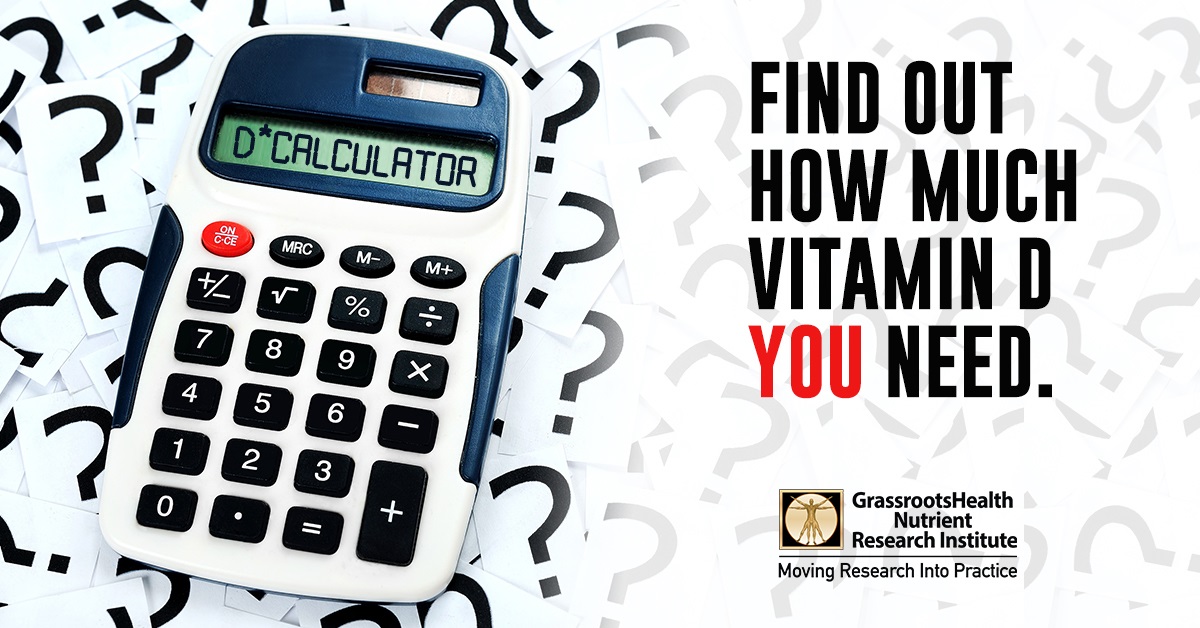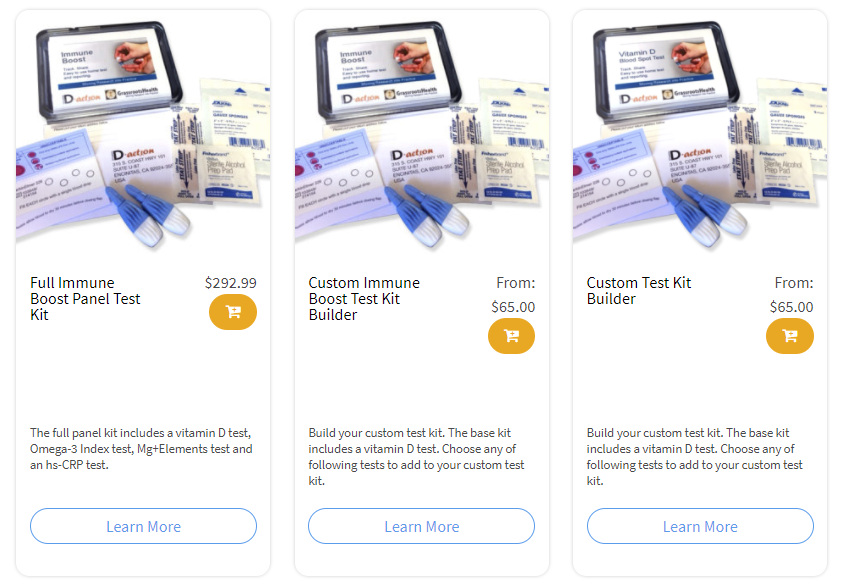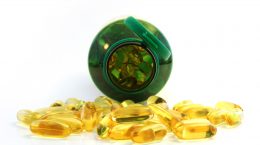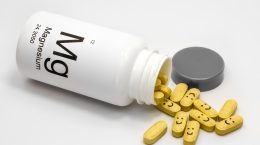Published on September 22, 2020
In a previous post we discussed the importance of the serving size amount and suggested directions for use to ensure that you get the nutrients you expect from the supplements you are taking. We also previously looked at the information that is important on vitamin K labels and magnesium labels. In today’s post we will look at the information on vitamin E supplement labels.
Why is Vitamin E Important?
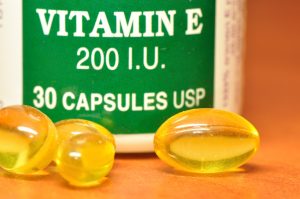 Vitamin E is a collective group of fat-soluble antioxidants. While multiple forms of vitamin E exist, alpha-tocopherol is the most important for the human body and only alpha-tocopherol supplementation can correct symptoms of vitamin E deficiency. Alpha-tocopherol is present naturally in some foods and added to others. Food sources include nuts, seeds, vegetable oils, leafy green vegetables, and fortified cereals. It is also available as a supplement, both in many multi-vitamins and as a standalone supplement.
Vitamin E is a collective group of fat-soluble antioxidants. While multiple forms of vitamin E exist, alpha-tocopherol is the most important for the human body and only alpha-tocopherol supplementation can correct symptoms of vitamin E deficiency. Alpha-tocopherol is present naturally in some foods and added to others. Food sources include nuts, seeds, vegetable oils, leafy green vegetables, and fortified cereals. It is also available as a supplement, both in many multi-vitamins and as a standalone supplement.
Vitamin E (alpha-tocopherol) is an antioxidant important for protecting cell membranes, particularly in the brain. Fats that make up the cell membrane, such as omega-3 and -6 fatty acids, are particularly vulnerable to attack by reactive oxygen species. Vitamin E neutralizes these free radicals to prevent damage to the cell. Vitamin E also plays a role in cell-mediated immune function. Vitamin E enhances T cell function, protects the cell membranes of immune cells, and reduces production of immunosuppressive factors.
How does vitamin E appear on supplement labels?
Most vitamin E supplements provide only alpha-tocopherol, but some may contain other forms of vitamin E in addition to alpha-tocopherol which are often referred to as “mixed” vitamin E supplements. The amount of alpha-tocopherol will appear on the label, which is 268 mg in the example below, as will the amount of the other forms if present, which is 1 mg on this label (“mixed tocopherols”).
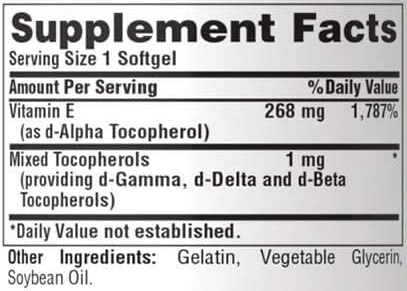
Additionally, vitamin E (alpha-tocopherol) supplements may have natural or synthetically produced alpha-tocopherol. Natural alpha-tocopherol only occurs in one stereoisomeric form (i.e. 3-D orientation) whereas synthetically produced alpha-tocopherol contains all eight possible stereoisomeric forms, of which only four are maintained by the body so the same amount of synthetic alpha-tocopherol is half as bioavailable as the natural form. On the supplement label, synthetic alpha-tocopherol has a “DL” or “dl” in front of “alpha-tocopherol” whereas the natural form has a “D” or “d”. The example supplement label above has natural alpha-tocopherol. Further, alpha-tocopherol can be chemically combined with an acid to form esterified E, called “alpha-tocopheryl acetate” or “alpha-tocopherol succinate” on the label, which is a more stable compound and has a longer shelf life.
On the GrassrootsHealth questionnaire, we are looking for the amount of alpha-tocopherol, either natural or synthetic, or the amount of esterified E. We do not collect information about other vitamin E forms. In the example above, we would want 268 mg, not the mixture (1 mg) nor a total of these two numbers (269 mg).
Also of note, starting in January 2020, supplement labels should now list vitamin E in mg; however, some smaller companies may still be reporting international units (IUs). To convert from IU to mg: 1 IU of the natural form is equivalent to 0.67 mg of alpha-tocopherol and 1 IU of the synthetic form is equivalent to 0.45 mg of alpha-tocopherol.
Among GrassrootsHealth participants who have previously reported their supplemental intake for vitamin E, 26% report taking supplemental vitamin E . We appreciate you taking the time to enter your supplemental vitamin E intake in the questionnaire! Keep an eye out for more on this series on what information to look for on supplement labels.
Are you getting enough immune-essential nutrients?
Could a nutrient deficiency be putting a damper on your immune response? Find out by testing your vitamin D, omega-3s, magnesium and other essential elements (including copper and zinc), as well as your inflammation levels, with the new Immune Boost home test kit offered by GrassrootsHealth. Measuring levels is the only way to know if you are supporting your immune system and whether additional changes should be made, with supplementation, dietary changes, or both.
Enroll now with the Full Immune Boost Panel (which includes tests for vitamin D, Omega-3 Index, magnesium, zinc, selenium, copper, and hsCRP), and get 10% off when you use coupon code BoostTen at checkout.
What Does it Take YOU to Get Your D to 40 ng/ml (100 nmol/L)?
Did you know your health could be greatly affected by making sure you have a vitamin D level of at least 40 ng/ml (100 nmol/L)? Help us help you.
STEP 1 – Do you know what your vitamin D level is? If not, be sure to test today to find out.
STEP 2 – Determine your target level. Are you at your target level? Experts recommend a level of at least 40-60 ng/ml (100-150 nmol/L).
STEP 3 – Need to boost your level? Use the D*calculator to see how much vitamin D it may take to reach your target. Opt for the Loading Dose for a quicker boost.
STEP 4 – Optimize how your body absorbs and utilizes vitamin D with co-nutrients and these simple steps.
STEP 5 – Re-Test! This is an important step to make sure you have reached your target level, and to ensure you are not taking too much! Re-testing after 3-4 months is recommended.
STEP 6 – Adjust, Repeat…
Give your immune system the nutrients it needs to support a healthy you and protect yourself from unnecessary diseases, especially COVID-19.
NEWS ALERT
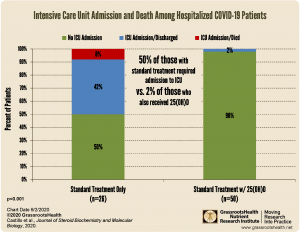 The first Randomized Controlled Trial on vitamin D and COVID-19 has shown a 96% lower risk of ICU admission for those receiving vitamin D (as 25(OH)D to quickly boost vitamin D blood levels) along with the standard treatment, compared to those receiving standard treatment alone.
The first Randomized Controlled Trial on vitamin D and COVID-19 has shown a 96% lower risk of ICU admission for those receiving vitamin D (as 25(OH)D to quickly boost vitamin D blood levels) along with the standard treatment, compared to those receiving standard treatment alone.
These results support many previous observational studies showing a relationship between vitamin D levels and intake and COVID-19 severity.
Review the Latest Nutrient Research for COVID-19
GrassrootsHealth Nutrient Research Institute has launched the new Immune Boost project with the use of our myData-myAnswers nutrient health system that nearly 15,000 people are already using for their health. Specific markers that influence immune health are suggested for testing as part of this project including:
- Vitamin D
- Omega-3 Index
- Essential elements magnesium, selenium, and zinc
- hsCRP
Our goal is to demonstrate how one can use the Nutrient Research Model established by Dr. Robert Heaney to show the effect of vitamin D serum levels of at least 40 ng/ml (100 nmol/L) on risk reduction for all ethnicities in the population. Status and intake of other nutrients will also be analyzed for any type of relationship to immune status and symptom severity. Join the project today!
Please let us know if you’re interested in helping sponsor this project.
CLICK HERE for updates and new information about the project.
Through GrassrootsHealth Nutrient Research Institute, you can also test your essential elements magnesium, copper, zinc and selenium, toxins such as lead, mercury and cadmium, as well as your omega-3 levels, inflammation levels and thyroid stimulating hormone (TSH) level. Find out your levels today! Log on to the test selection page (click the link below) to get your tests and see for yourself if your levels can be improved.
Make sure you track your results before and after, about every 6 months!
Click Here to Access the Test Page
How can I track my nutrient intake and levels over time?
To help you track your supplement use and nutrient levels, GrassrootsHealth has created the Personal Health Nutrient Decision System called
For each specific supplement, you can track what days you take it, how much, and many other details. This will help you know your true supplemental intake and what patterns of use work for you to reach and maintain optimum nutrient levels. Check it out today!


